As a passionate home cook, I’ve often found myself in the middle of a recipe only to realize I’m out of a key ingredient. One such ingredient that’s not always in my pantry is anchovies.

Whether it’s due to dietary restrictions, personal preferences, or simply not having them on hand, I’ve had to explore various anchovy alternatives.
This exploration has led me to discover a world of substitutes that not only mimic the unique flavor of anchovies but also add their own unique twist to dishes.
In this article:
Why Substitute Anchovies?
There are several reasons why you might want to substitute anchovies in your recipes.
First and foremost, finding fresh anchovies can be a challenge. They are not always readily available in local grocery stores, especially if you live in a landlocked area.
Secondly, you might be looking for a vegetarian alternative that can mimic the unique flavor profile of anchovies.

This can be particularly useful if you’re cooking for someone who doesn’t eat fish, follows a vegan diet, or has an allergy.
Lastly, the versatility of using substitutes can open up a world of culinary possibilities. By experimenting with different ingredients, you can create new and exciting flavors in your dishes.
1. Worcestershire Sauce
Worcestershire sauce is a popular condiment known for its complex flavor profile.
Originating from Worcester in Worcestershire, England, this fermented liquid condiment was invented in the 19th century by pharmacists John Wheeley Lea and William Henry Perrins.
Its rich taste comes from ingredients like malt vinegar, anchovies, tamarind, garlic, and molasses.
It’s a versatile ingredient that can be used as a substitute for anchovies in a variety of dishes. Let’s delve into the details.
How to Use Worcestershire Sauce?
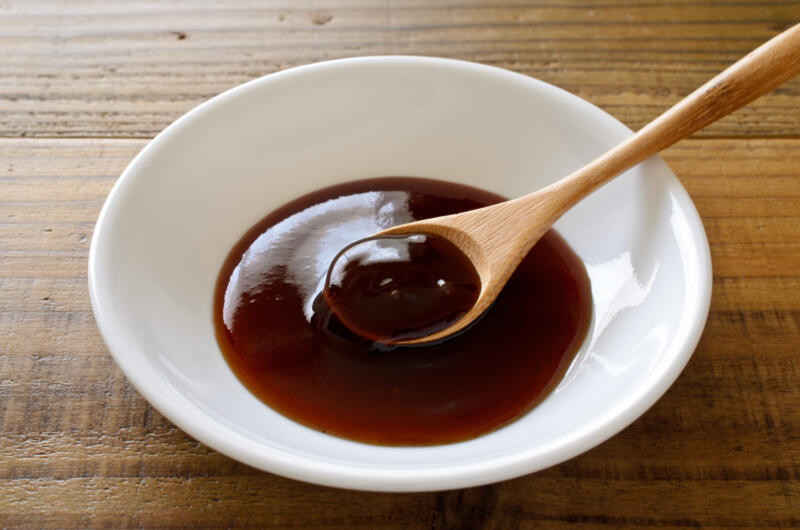
It can be added in smaller quantities to dishes like soups, sauces, marinades, and dressings to provide a salty umami flavor.
Start with a few drops and increase if desired, but be cautious when substituting in recipes that require a large amount of anchovies.
It’s worth noting that Worcestershire sauce is a fermented liquid that contains anchovy paste, which contributes to its unique flavor.
Pros and Cons of Using Worcestershire Sauce as an Anchovy Substitute
On the plus side, it contains anchovies, which means it can provide the desired flavor in recipes.
It’s also widely available and can add a savory and salty flavor to your dishes.
On the downside, if you’re trying to avoid anchovies altogether, keep in mind that they are a key ingredient in Worcestershire sauce.
Additionally, you may need to adjust the quantity used to avoid overpowering the dish.
2. Kalamata Olives
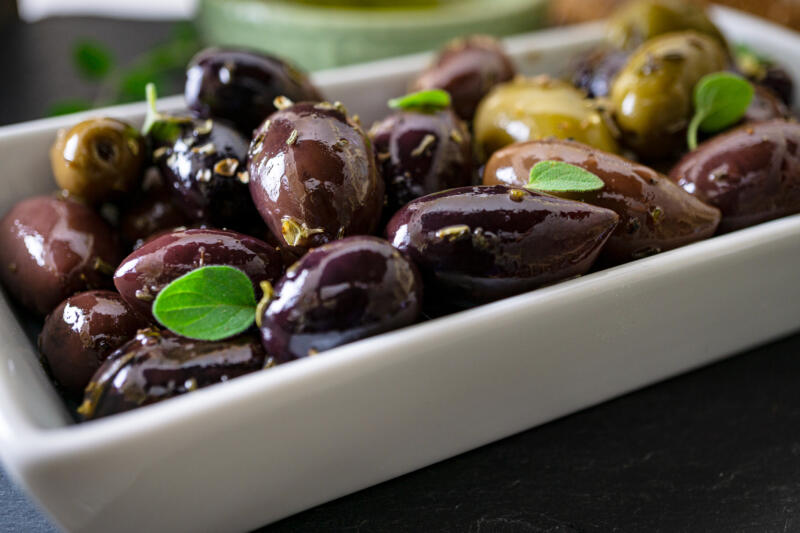
These olives are easily recognizable by their large size, dark purple hue, and unique almond shape.
What truly sets them apart, however, is their rich and robust flavor profile.
They possess a deep, fruity taste with hints of wine-like richness, complemented by a slightly briny and tangy undertone.
Unlike other olives, Kalamatas are not harvested green; they are allowed to ripen fully on the tree, which contributes to their sweeter and less bitter taste.
Once picked, they are typically preserved in a mixture of wine vinegar, brine, or olive oil, further enhancing their unique taste.
How to Use Kalamata Olives as a Substitute for Anchovies?

Kalamata olives can be an effective substitute for anchovies in various dishes. Their versatility and ability to add a savory and salty flavor to recipes make them a popular choice.
They are commonly used in salads, dressings, pizzas, and pasta sauces, where they can provide a similar depth of flavor as anchovies.
Pros and Cons of Using Kalamata Olives as an Anchovy Substitute
Kalamata olives, when used as an anchovy substitute, bring a sweet, fruity, and distinct flavor to the table.
Unlike anchovies, they don’t have a fishy taste. Their meaty and firm texture adds a delightful bite to various dishes, making them especially versatile in Mediterranean cuisine, salads, and dishes with vegetables and cheeses.
For vegetarians and vegans, Kalamata olives are an excellent choice.
One of their advantages is the absence of a fishy aftertaste, which is common with anchovies.
However, they can be quite salty, so you might need to adjust the seasoning in your recipes.
In terms of cost, Kalamata olives might be pricier than regular olives or anchovies, and while they are popular, they might not be as easily available in every grocery store.
3. Seaweed
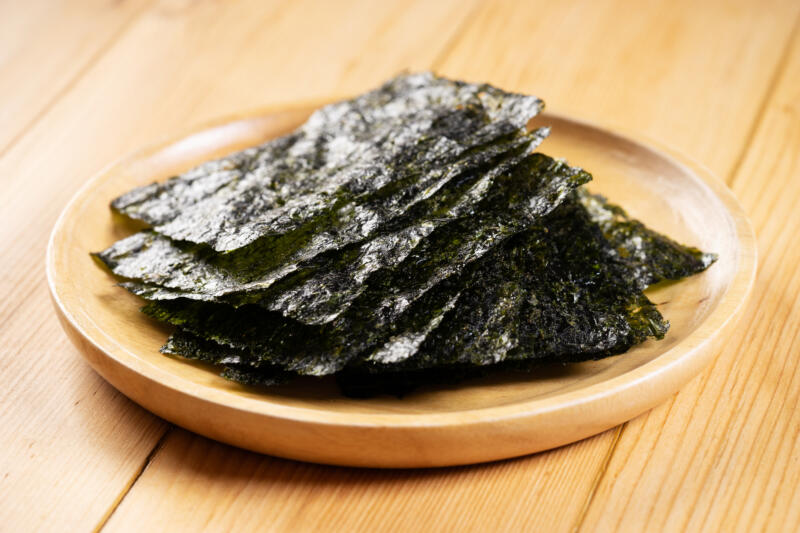
Seaweed, a staple in many Asian cuisines, is a fantastic vegetarian alternative to anchovies.
It’s not only packed with nutrients but also carries a salty, umami flavor that can mimic the taste of anchovies in various dishes.
How to Use Seaweed as a Substitute for Anchovies?

Here’s how you can incorporate it into different dishes:
- Salads: Thinly sliced or crumbled seaweed, such as nori or wakame, can be sprinkled over salads to impart a mild salty flavor reminiscent of anchovies. It not only adds taste but also a contrasting texture.
- Soups: Dried kelp or kombu can be simmered in broths to infuse them with a deep umami flavor. This is especially popular in Asian cuisines where seaweed broths form the base for many soups.
- Stir-fries: Seaweed can be rehydrated and added to stir-fries. Its slightly chewy texture complements the crispness of stir-fried vegetables. It’s best to use varieties like hijiki or arame for this purpose.
- Sushi: Nori, a type of seaweed, is already a primary ingredient in sushi rolls. However, for those looking to intensify the oceanic flavor without using fish, additional seaweed varieties can be incorporated into the rice or fillings.
- Pasta and Sauces: Seaweed can be finely chopped and added to pasta sauces, especially in dishes like spaghetti aglio e olio where anchovies are traditionally used. The seaweed will provide a similar salty and umami-rich flavor.
- Snacks: Seaweed snacks, often seasoned and roasted, can be eaten on their own or crumbled over dishes to add a burst of flavor.
When choosing seaweed as a substitute for anchovies, it’s essential to consider the type of seaweed and its flavor intensity.
While some varieties like nori are milder, others like kombu can have a more pronounced oceanic taste. Adjust the quantity based on the dish and your flavor preference.
Alternatives for Fishy Flavors and Strong Taste
If you’re looking for alternatives that can mimic the fishy flavors and strong taste of anchovies, there are several options available. Let’s explore some of them.
4. Asian Fish Sauce
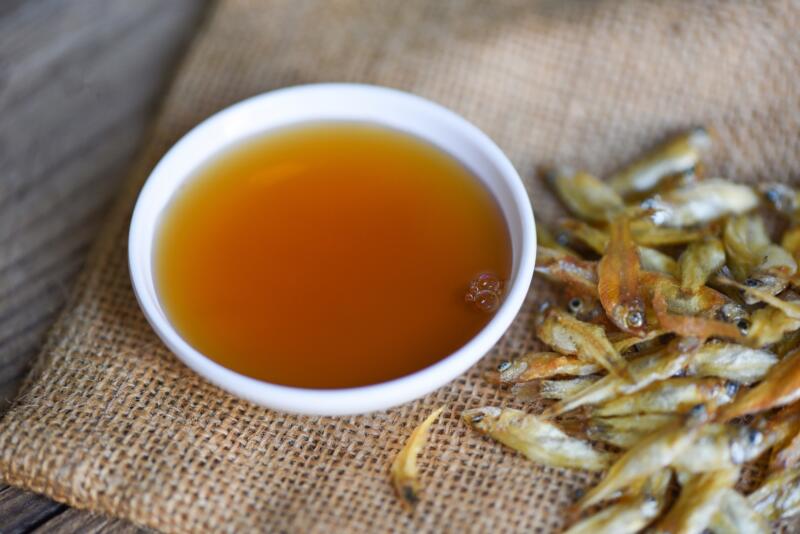
Asian fish sauce, with its pungent flavor and fragrance, closely resembles the taste of anchovies. It is produced through the fermentation of fish, resulting in a concentrated, salty liquid used widely in cooking
Commonly used in soups, stocks, stews, and even Caesar salad dressing, it’s a great alternative to anchovies.
However, due to its intense flavor, it should be used sparingly.
5. Umeboshi Paste
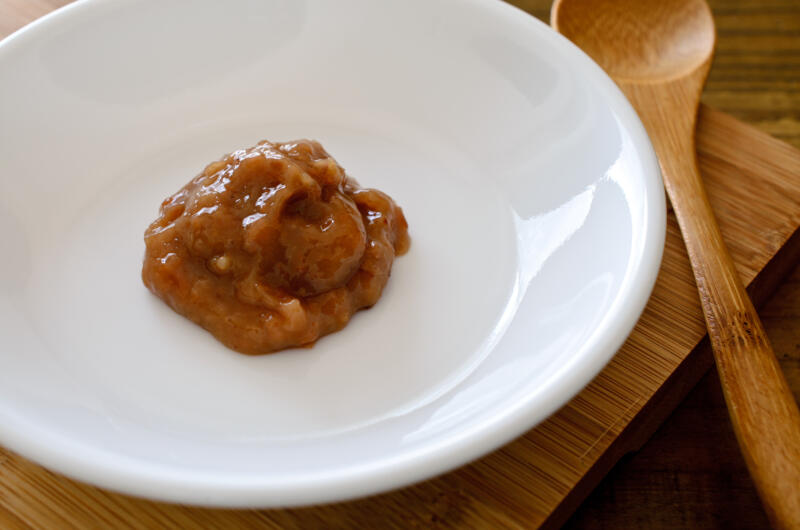
Umeboshi paste, made from pickled plums, is a vegan-friendly alternative to anchovies with a salty, umami flavor.
Commonly used in Asian cuisine, this plum paste can be used in sauce-based or liquid-based recipes, such as salad dressings and marinades.
6. Miso Paste
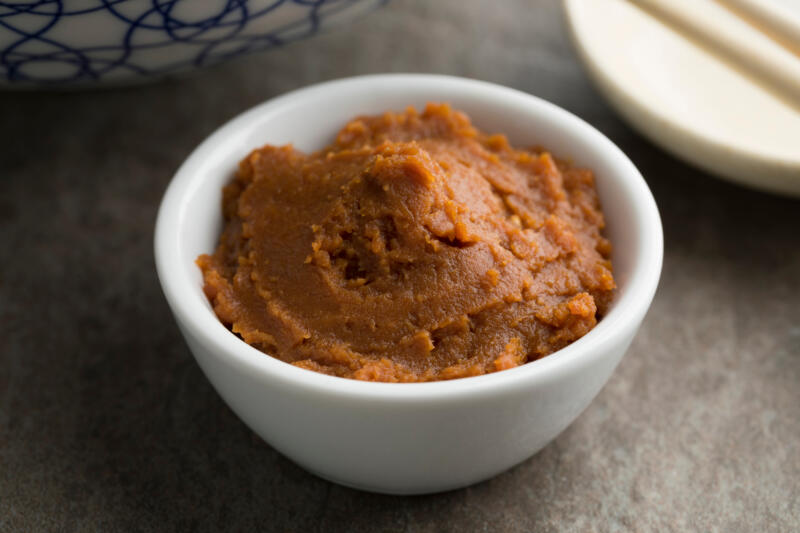
Miso paste, made from fermenting soybeans and rice or barley, is a vegan substitute for anchovies.
This thick and earthy paste carries a strong fermented flavor, making it a versatile condiment and ingredient in various dishes.
7. Shrimp Paste
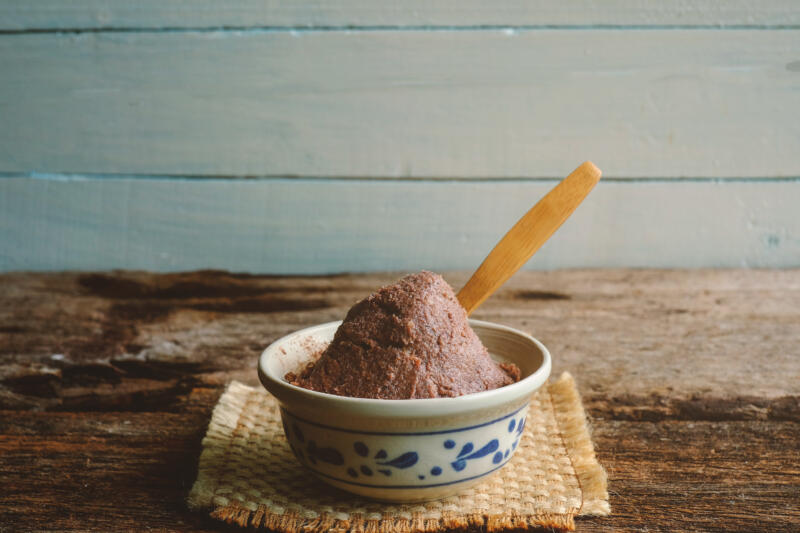
Shrimp paste is another substitute for anchovies that packs a strong flavor and umami funk.
It’s a staple in Southeast Asian and Southern Chinese cooking and can be easily purchased or made at home.
When substituting with shrimp paste, a general rule of thumb is to use 1/4 teaspoon of shrimp paste for every anchovy fillet.
Other Salty Alternatives
If you’re looking for other salty and umami flavor alternatives to anchovies, there are several options available.
8. Capers
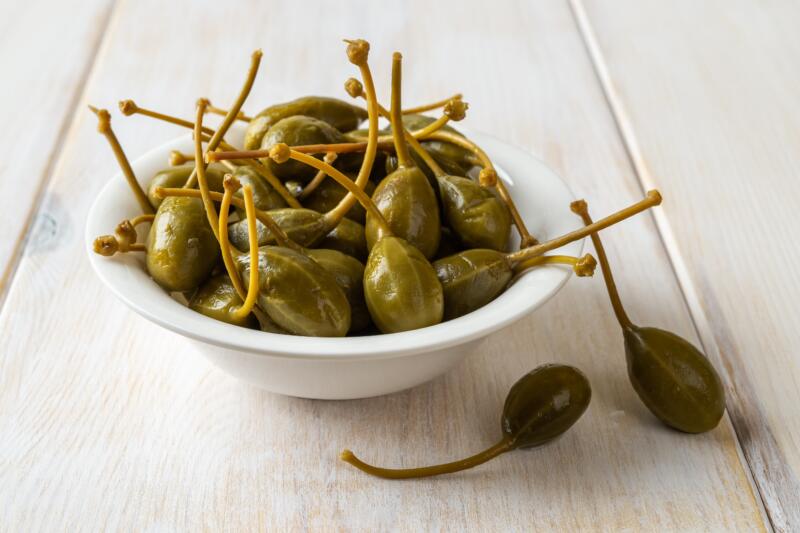
Capers, the small flower buds of the caper bush, can be a great substitute for anchovies.
They have a similar briny flavor profile, adding saltiness and fishy notes to dishes.
Capers can be used as a garnish or added to sauces, marinades, salad dressings, pasta dishes, soups, and casseroles, making them a versatile alternative to anchovies.
9. Soy Sauce
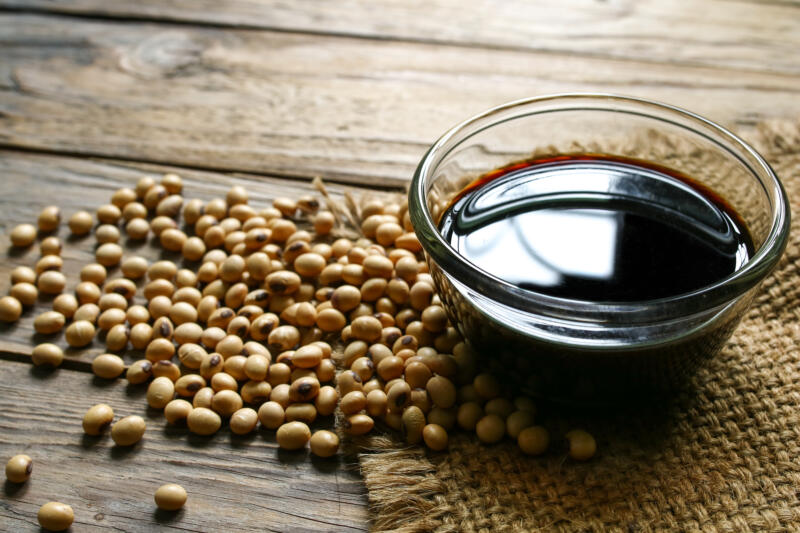
Soy sauce, made from fermented boiled soybeans and roasted grains, offers a rich umami flavor similar to anchovies.
It can be a great substitute for anchovies in various dishes.
However, be mindful of the salt content and opt for low-sodium or coconut-based soy sauce when possible.
Choosing the Right Substitute
Choosing the right substitute for anchovies can depend on several factors, including the type of dish, dietary restrictions, and personal taste preferences.
For instance, if you’re making a salad dressing, Worchester sauce or capers might be a good choice.
If you’re cooking a stir-fry or a soup, soy sauce or seaweed could be more suitable.
Always consider the flavor profile of the dish and the characteristics of the substitute to ensure a delicious result.
Closing Thoughts
We’ve journeyed through a world of anchovy substitutes, exploring everything from Worcestershire sauce and Kalamata olives to seaweed and other salty alternatives.
Each substitute brings its own unique flavor and characteristics, opening up a world of culinary possibilities.
As always, I’d love to hear your thoughts, questions, and experiences with these substitutes. So, don’t hesitate to share in the comments below!